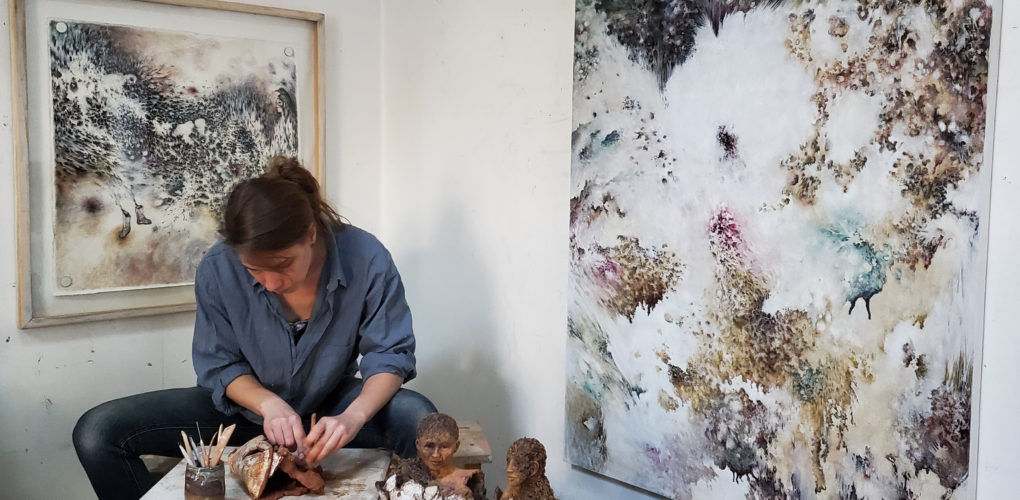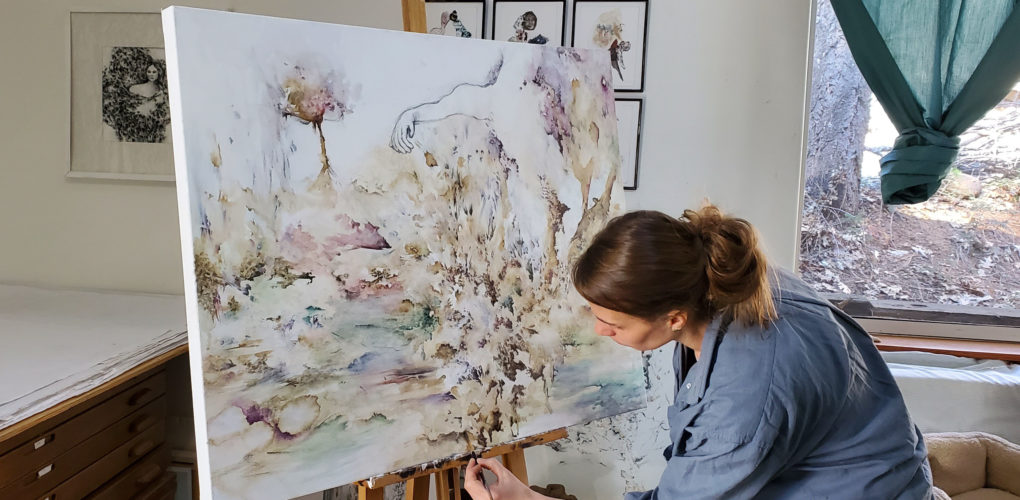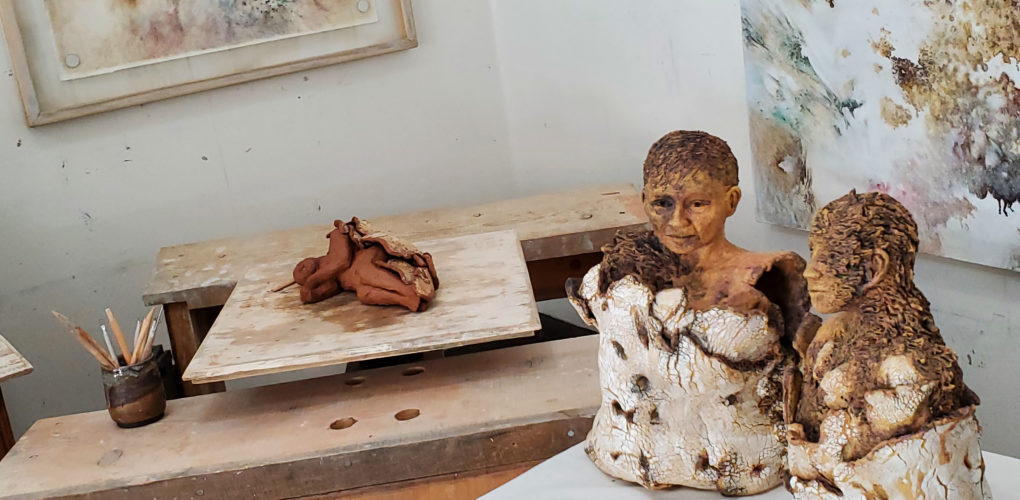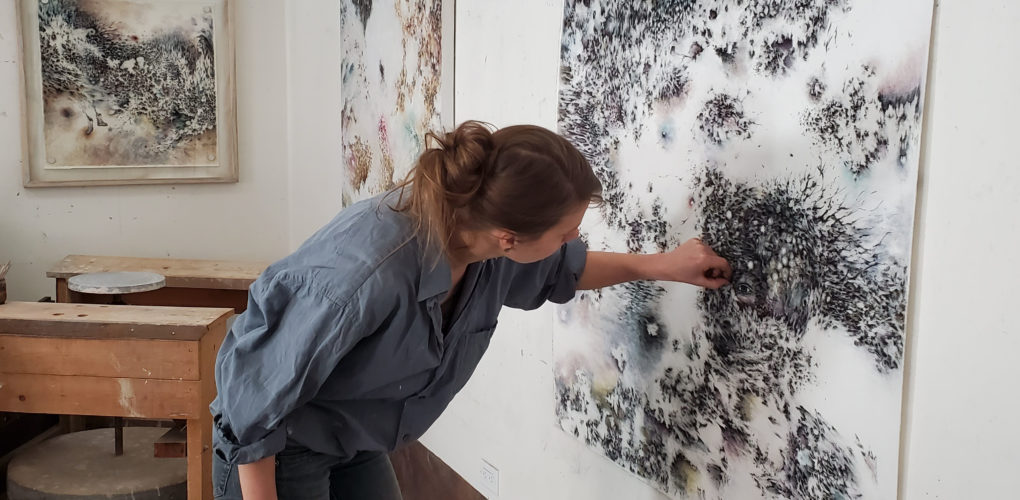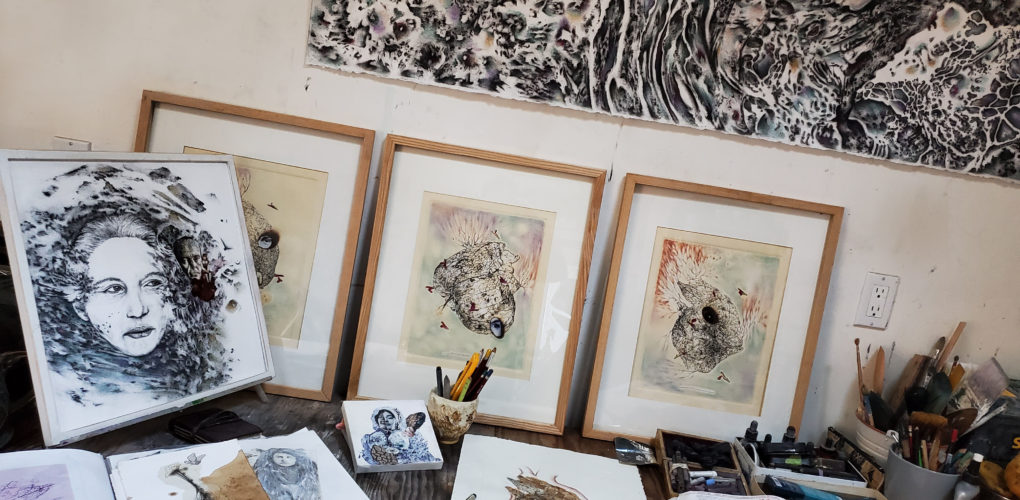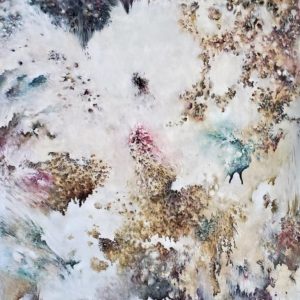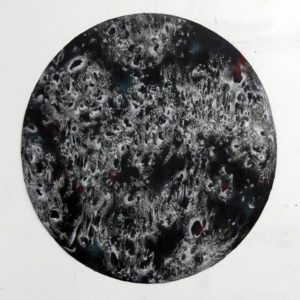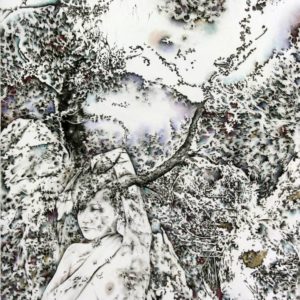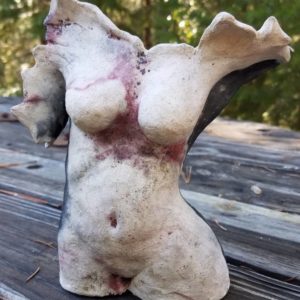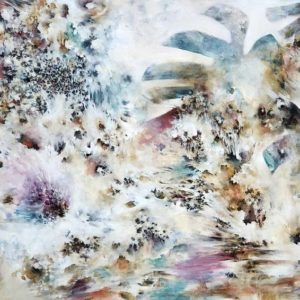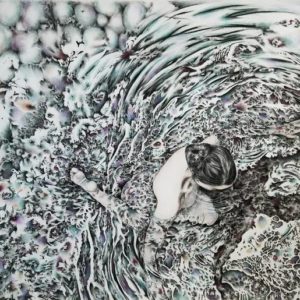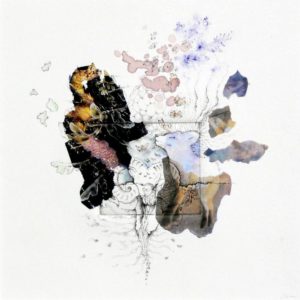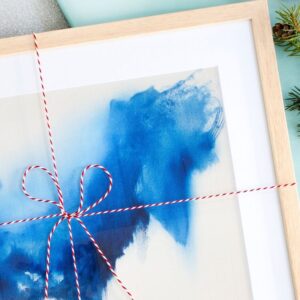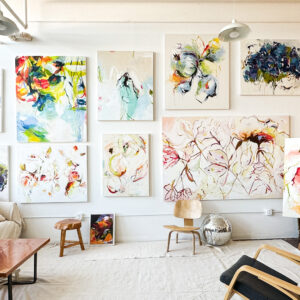One to Watch
 Mieke Tracy: Connecting One Human Existence to Another
Mieke Tracy: Connecting One Human Existence to Another
Mieke Tracy thinks of her work as handwriting. With intricate mark making and delicate gradations, Mieke’s drawings, paintings, and prints allow the subtleties of the artwork’s personality and potential meanings to emerge quietly from the surface. Working across two-dimensional mediums as well as sculpture, Mieke approaches her art practice with an intuitive mindset that never fails to result in meditative and intimate works. Taking cues from Carl Jung’s theory of the collective unconscious, Mieke creates overwhelming compositions of organic forms and ambiguous figures to explore human connection, and the perennially mystifying relationship between the individual and the whole.
Mieke studied fine art at Emily Carr University of Art and Design in Vancouver and the Willem de Kooning Academy in Rotterdam. She has exhibited her work at the International Miniprint Finland exhibition in Lahti, Finland, and at the Wild & Scenic Arts Showcase in Grass Valley, California, where she lives and works.
Tell us about who you are and what you do. What’s your background?
My name is Mieke and I’m an artist working in different media, mainly charcoal drawing, painting and ceramics, some collage and occasional printmaking too. I grew up in the Netherlands, and got my BA at the Willem de Kooning Academy in Rotterdam. During an exchange to Canada, the wild and vast nature of North America made a lasting impression. After college I moved to the US, where I’ve been living for almost 18 years now, mostly in the wooded Foothills of the Sierra Nevadas. Though I always stayed creative, my art was a bit more on the backburner for many years, but it has regained a central role again in recent times.
What does your work aim to say? What are the major themes you pursue in your work?
For me, art and creativity is very much about the freedom to find some kind of value and beauty in new and unexpected ways; ways that I didn’t necessarily know of, or accepted, before I started the process of making something. I don’t think my work aims to make an obvious or bold statement, but rather it emphasizes the gradual and subtle process of something growing into its own being. I like my work to read a bit like handwriting, subtly revealing the intricacies of its personality by being around it, connecting one human existence to another. I want there to be something very immediate and intimate to the work, with a palpable presence and absence to it simultaneously. I tend to work with a pretty large degree of organic abstraction, but I also enjoy using (and sometimes hiding) figurative and symbolic elements, to bring the work closer to human psychology.
Can you walk us through your process for creating a work from beginning to end?
I usually start working on a new piece with some idea of a composition or figurative elements, and keep a very inquisitive and exploratory mindset. Sometimes I sketch first, or work from pictures, sometimes I don’t. I try and let the piece gradually come into its own, which can go smoothly, but can also happen with plenty of challenge, while abandoning the original idea entirely. I like to work on different formats and across different media, as it keeps me from getting too confined or hung up, and gives me something to work with in every kind of mood.
On a psychological level I see it all a bit like pioneering; at times you just keep taking the next step without knowing if there will be any ground underneath. But again, I keep looking for some kind of value, beauty and ultimately a kind of power to reveal itself in the piece.
Who are your biggest influences and why?
I imagine the people closest to me affect me the most, but I can be influenced by many different people. I’m interested in the infinite ways people cope, overcome, and adapt to circumstances in combination with their own inherent nature. I like thinking in terms of psychology and philosophy, and in recent years I’ve been getting more familiar with the writing of psychologist C.G. Jung. I think Jung’s writings about the subconscious and collective unconscious have affected my perspective quite a bit. He seemed to have had a deeply inquisitive, open, and compassionate attitude towards the human experience and all the different ways it manifests.
How does your work comment on current social and political issues?
My work allows me to search for a language that isn’t particularly politicized or polarized, while still finding what feels “true” for me. It has the potential to reconcile both the longing for freedom and the longing for some kind structure or ground; perhaps essentially the things all people look for and fight over.
Sometimes it’s easy not to look too in depth at things. We can avail ourselves of all kinds of information and can quickly form a superficial, externalized image and judgement of situations, others, and ourselves. But I think for me art is a way to question and take a closer look into the nature of things, which appears to me quite complex, ambiguous, and without easy answers.
How do you hope viewers respond to your works? What do you want them to feel?
I want the work to pass on some of the presence and connectedness to life I felt while making it. I think I would like the viewer to experience some of that ambiguity and complexity of things, and, like I did, sense some kind of beauty, power and appreciation in that.
Who are some of your favorite artists, and why?
I can have plenty of little crushes on different artists. But in essence I like artists that tried living a creative life; perhaps in obscurity, facing conventions or adversity, yet with enough spirit and consistency to have their work become a bridge toward a broader perception.
What was the best advice given to you as an artist?
I always remembered something a teacher in the Netherlands said. It was in Dutch (“toeval is wat je toevalt”), but roughly it means that coincidences are the things that come to you or fall into your lap, the things that you can work with. It helps me keep an open and inquisitive mind.
Love reading about all things art? You can have articles from Canvas, curated collections, and stories about emerging artists delivered straight to your inbox. Sign up for the Saatchi Art Newsletter.
